|
The Project
 Research Methods Research Methods
 Research Questions Research Questions
The Locations
How to Use This Site
Links
Part 1:
January 25 - February 9, 2005
The Team
Daily Journal
New Horizon Daily Report
New Horizon Cruise Track
Part 2:
July 23 - August 13, 2005
The Team
Daily Journal
New Horizon Daily Report
New Horizon Cruise Track
Part 3:
August 30 - September 8, 2005
The Team
Daily Journal
R/V Wecoma Daily Report
R/V Wecoma Cruise Track
Contact Us

|
The Team |
Part 2
July 23 - August 13, 2005
|
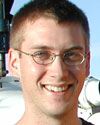 Greg Dick, Graduate Student Greg Dick, Graduate Student
Scripps Insitution of Oceanography
University of California San Diego
Greg Dick got his undergraduate degree in biology at the University of Virginia. He now is a graduate student in marine microbiology at the Scripps Institution of Oceanography in San Diego. Greg is interested in microbes and how these tiny organisms are able to influence ocean chemistry and geology. He is especially interested in how microbes and chemical elements interact at deep-sea hydrothermal vents. Bacteria live off the chemicals in the water that come from the vents. These bacteria are able to support an entire ecosystem because they are the basis of the vent food web.
When not working, Greg enjoys reading and outdoor activities such as backpacking, scuba diving, and ocean kayaking. He is also a big sports fan, especially for the University of Virginia football and basketball teams.
Chris Dupont, Graduate Student
Scripps Institution of Oceanography
Chris Dupont is a graduate student in marine biology and marine chemistry. He is interested in the interactions between marine microbes and trace metals such as copper and nickel. In order to study these interactions, Chris does many chemical analyses. He first analyzes the genome (the genetic material of an organism) of a “model organism”. This analysis gives him a framework for doing chemical and biochemical experiments. Chris is interested in how the changing state of the ocean over geological time has been recorded in the genomes of organisms. In his spare time, Chris runs occasionally, reads, and surfs a great deal. He tends to pack a car and disappear for long road trips to Baja California.
Elisa Maliverno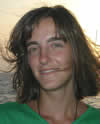
University of Milano-Bicocca
Elisa is a PhD graduate in geology. She is presently working as an assistant at the University of Milano-Bicocca and in collaboration withwith Patrizia Ziveri. Elisa is interested in the relationship of coccolithophorids to their environment. She wants to know where they can be found in the world’s oceans, and why they are there.Coccolithophorid shell remains form sediments at the bottom of the oceans, and she is interested in knowing more about that process. This knowledge will help scientists understand changes in the ocean which occurred thousands of years ago. Elisa has studied coccolithophorids in the Mediterranean Sea, and this year she took part to the Italian Antarctic Expedition, so that she had the opportunity to sample and look at coccolithophorids from the Southern Ocean.
When not working, Elisa likes traveling around the world, hiking and biking on the mountains, swimming at sea and, not last, gardening. She loves taking pictures of almost everything in nature.
Luis de Jesús Ochoa-Castillo, Student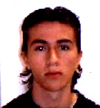
Universidad de Sonora
Luis Ochoa-Castillo was born in Hermosillo, Mexico. He is studying biology at the Universidad de Sonora. He is interested in the natural sciences and especially in aquaculture. After he finishes his studies, Luis will continue in a master’s program. Luis has taken part in competitions of mobile robots. When he isn’t studying, Luis likes to read and to watch documentaries about scientific and historical subjects. He also likes to travel.
 Brian Popp, Professor Brian Popp, Professor
University of Hawaii, Department of Geology and Geophysics
Brian is a professor of Geology and Geophysics at the University of Hawaii. Brian is interested in a number of research projects, all involving the use of stable isotopes. Stable isotopes are elements that have the same number of protons and electrons but different numbers of neutrons. So, they have different weights or masses. These masses react slightly differently during chemical or biochemical reactions. They can give us important environmental information that allows us to say things about how organisms in the ocean are responding global climate change, or have responded in the past to such changes.
The research partnership with Dr. Fred Prahl is ideal since Fred is an expert in the identification and separation of key biomarkers necessary for us to measure their isotopic composition. Research on these key biomarkers in the ocean has taken Brian to several sites, including the subarctic Pacific, Bering Sea, subtropical Pacific near Hawaii and the Gulf of California. All of these sites have one thing in common that is very important to Brian - great deep sea fishing! When not on the ocean performing experiments and collecting samples, Brian likes to fish. He also enjoys kite sailing, SCUBA diving, spearfishing and snow skiing.
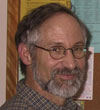 Fred Prahl, Professor Fred Prahl, Professor
Oregon State University
Fred is a professor of chemical oceanography at Oregon State University. He is interested in organic molecules, particularly those whose chemical structures are unique to specific creatures living in the sea. Such molecules are called 'biomarkers'. In doing his research, Fred collects water and sediment samples from the ocean. He identifies and analyzes the biomarkers in these samples. In this way, he learns about the present and past life history of the specific sea creature that made the biomarker. This information helps us to understand Earth processes such as climate change. Fred's field of oceanographic research is known as marine organic geochemistry.
Fred has done much of his field work over the years in his backyard off Oregon and Washington. But, he has also ventured elsewhere in the Pacific Ocean, such as 100 km off the north coast of Oahu, Hawaii, throughout the fjords of SE Alaska and now in the Gulf of California. The Gulf of California (or Sea of Cortez) is the site of study for the present cruise aboard the RV New Horizon. When not pursuing the mysteries of marine organic geochemistry, Fred enjoys woodworking, cycling, hiking and shooting pool.
Eileen “Percy” Purcell, Instructor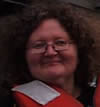
Clatsop Community College, Astoria, Oregon
Percy Purcell is the Outreach Literacy Coordinator at Clatsop Community College in Astoria, Oregon. She began working in adult education at Job Corps about 15 years ago. Since then, Percy has taught English in Japan and continues to teach GED/ESL today. She also has gone to sea once on a halibut boat working out of Kodiak, Alaska.
Percy believes that incorporating ocean sciences into adult education curricula is an excellent way for members of coastal fishing communities to reinvent and reconnect with a traditional way of life eroded by a decline in natural resources. She is grateful for the opportunity to be a “Teacher-at-Sea”. Percy hopes she will be able to convey both the experience and the broader implications of this New Horizon research to her students. In her spare time, she likes to travel, talk and do crossword puzzles.
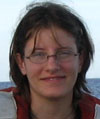 Ida Royer, Graduate Student Ida Royer, Graduate Student
Oregon State University
Ida is working on a master's degree in chemical oceanography. Dr. Fred Prahl is her advisor. Ida studies the biochemical make-up of Emiliania huxleyi, a marine phytoplankton. She is analyzing the amino acid content of this microscopic plant. Other people have collected this plant from different parts of the ocean, and Ida grows them in the lab at Oregon State. She is interested in seeing if/how the plants differ from each other when they become stressed by a lack of light and a lack of nutrients. When not working, Ida likes to hike, quilt, cook (eat!), fly her kite, and read. During winter, she likes to pretend she's living someplace else.
 Terri Rust, Technician Terri Rust, Technician
University of Hawaii
Terri is a laboratory/research technician. She is in charge of a chemical analysis facility at the University of Hawaii. She received an undergraduate degree in geology from Duke University. Then she studied methane gas in an estuary for her Master of Science thesis in oceanography. This work led to an interest in using stable isotopes as a tool for understanding the behavior of methane, an important greenhouse gas. As manager of the University of Hawaii isotope laboratory, she works with a wide variety of samples. Some of these are plant tissues, animal tissues, and gases in seawater and sediments. She prepares the samples and analyzes them to find out their stable isotopic composition. She enjoys the challenge of maintaining the lab’s many instruments. She also enjoys helping the many students and researchers who use the lab to analyze their samples. Most of all, she looks forward to getting out in the field and actually collecting the samples! Terri has had the opportunity to participate in many oceanographic research cruises. She has gone to such fascinating places as Antarctica, the Arctic, and 2000 m below the surface of the ocean, where she visited some active hydrothermal vent fields.
When not working, Terri enjoys everything outdoors: surfing, diving, kayaking, photography, hiking, backpacking, traveling and learning about other cultures. She also enjoys a bit of gardening.
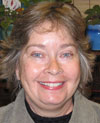 Carolyn Sheehan, Staff Research Associate Carolyn Sheehan, Staff Research Associate
Scripps Institution of Oceanography,
University of California, San Diego
Carolyn works in the laboratory of Professor Margo Haygood and Dr. Bradley Tebo. Their scientific research studies manganese cycling in ocean bodies. They also conduct research on anticancer compounds that are produced by marine invertebrates and their symbiotic bacteria.
As lab manager, Carolyn is responsible for aiding and supporting the research of thirty-five people: the two principal investigators, their postdoctoral fellows, graduate students, and undergraduate student volunteers. Carolyn is also responsible for designing and maintaining the aquaculture program, where marine invertebrates are grown.
When not working in science, Carolyn likes to work in fiber art, including knitting, shibori, and surface design. She also enjoys swimming, yoga, SCUBA, travel, cooking, eating, and drinking wine. Carolyn loves to go to sea on research cruises.
Vera Tai, Graduate Student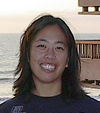
Scripps Institution of Oceanography
Vera is a graduate student in Marine Biology. She is interested in the
interactions between species of the microbial community. In the oceans,
microorganisms live in a seemingly similar environment, yet there are
thousands of species living together. Vera is curious about how different
microorganisms make a living and how different species are able to
co-exist. For her graduate research, Vera will be focusing on the
diversity and biochemistry of an important group of marine photosynthetic
microorganisms, the cyanobacteria.
As a devout Canadian, Vera has taken up ice and floor hockey on the days
she is not playing soccer. She also loves baking and eating cookies.
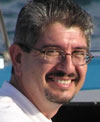 Dr. José Eduardo Valdez-Holguín, Titular Professor/Researcher
Universidad de Sonora Dr. José Eduardo Valdez-Holguín, Titular Professor/Researcher
Universidad de Sonora
José Eduardo is a titular professor/researcher of marine sciences (biological oceanography, phytoplankton productivity) at Universidad de Sonora (Sonora State University, México). He studies biological oceanography and how phytoplankton grows in the ocean. He uses information from satellites to estimate regional differences in phytoplankton. He compares the amount of phytoplankton in the ocean waters off California and off Mexico. He studies the Gulf of California and the southern region of the California Current (in Mexican waters). When not working, he enjoys spending time with his family, watching soccer and baseball, and listening to music.
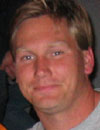 Richard Wallsgrove, Graduate Student Richard Wallsgrove, Graduate Student
University of Hawaii
Richard is a graduate student in chemical oceanography. His advisor is Professor Brian Popp at the University of Hawaii. Richard studies alkenones, a class of chemicals made by algae in seawater. He is studying how carbon isotopes in alkenones can provide information about how the algae grow. Richard also studies how alkenones provide information about carbon dioxide in seawater. This may someday allow researchers to use alkenones to help understand the role of greenhouse gases in the Earth's past.
Richard studied chemistry at UC Berkeley. Then he tried his hand at an odd variety of jobs, from teaching to magazine publishing. He returned to school to learn more about the Earth and its oceans. When he's not working, Richard enjoys surfing, traveling, reading, and fixing up his old house. On this cruise, Richard will help to collect alkenone samples. He will also measure oxygen concentration in the water and poke fun at the music that Chief Scientist Fred Prahl listens to in the lab aboard the ship.
Angel White, Graduate Student
Oregon State University, Corvallis, Oregon
Angel White has a Bachelors and a Masters degree from the University of Alabama in
Huntsville. Her primary research focus there was in using computer models to
more fully understand extremely low oxygen conditions in estuaries such as Mobile Bay. (This can be a problem for animals living at the bottom of the estuaries.) Angel says, “Because vegetarians starve in the South, I had to move to Oregon in search of
tofu.” She is now a PhD student in Biological Oceanography at Oregon State
University. Drs Ricardo Letelier and Yvette Spitz are her advisors. Angel’s present research involves using a combination of field research, laboratory
experimentation, and computer modeling. She wants to understand how the plants and animals of the ocean affect the chemistry of the ocean. She looks at the cycling of chemical elements in the tropical and subtropical regions of the world’s oceans. Much of her work centers on Trichodesmium, a cyanobacterium.
When not working, Angel enjoys distance running, mountain biking, cycling,
basketball, and learning to ride her new unicycle.
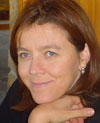 Patrizia Ziveri, Associate Professor Patrizia Ziveri, Associate Professor
Free University Amsterdam
Patrizia is an associate professor at the Free University of Amsterdam. Patrizia will not be going on this cruise, but she has gone to sea in the past with some of these scientists. Her research is an important part of the research questions being studied on this cruise. She is interested in calcium carbonate particles which come from plants and animals in the ocean. When these marine organisms die, their remains drop onto the deep seafloor as particles. They remain in the sediment on the ocean floor. The particles give us important information about the ocean and the environment in the past. The information also tells us more about the global carbon cycle. Patrizia is also interested in climate change and its effect on the ecology of marine organisms. Patrizia has given us permission to use the beautiful images of coccolithophores on the home page of this website (taken by Saskia Kars). Find out more about coccolithophores here or here.
Patrizia's work sites have included the Indian Ocean, North Atlantic, Mediterranean, North Pacific, and the California borderland. When not working, she enjoys playing with her daughter, bicycling, and swimming.

|




 Greg Dick, Graduate Student
Greg Dick, Graduate Student

 Brian Popp, Professor
Brian Popp, Professor

 Ida Royer, Graduate Student
Ida Royer, Graduate Student Terri Rust, Technician
Terri Rust, Technician Carolyn Sheehan, Staff Research Associate
Carolyn Sheehan, Staff Research Associate
 Dr. José Eduardo Valdez-Holguín, Titular Professor/Researcher
Universidad de Sonora
Dr. José Eduardo Valdez-Holguín, Titular Professor/Researcher
Universidad de Sonora Richard Wallsgrove, Graduate Student
Richard Wallsgrove, Graduate Student
 Patrizia Ziveri, Associate Professor
Patrizia Ziveri, Associate Professor